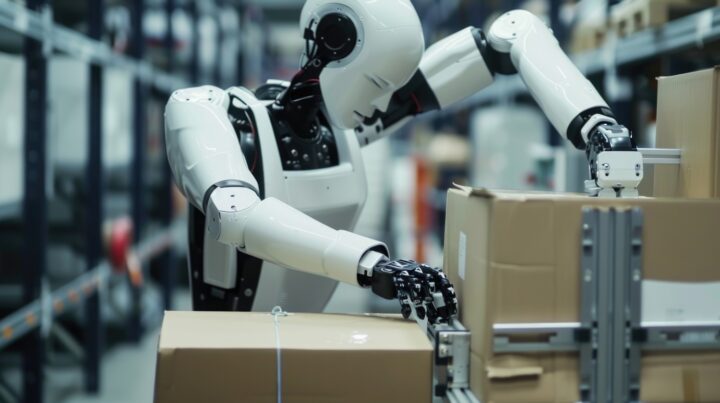As humanoid robots take their places in the world, their increased adoption would not be possible without advanced motion components that allow them to perform tasks by replicating human motion. But when it comes to selecting the right component for specific tasks and environments, you may need to sort through several design elements that can affect your robot’s performance or lifetime. This blog post will describe common humanoid robot motion needs, and it will provide an overview of some of the components that are ideal for their applications along with the features and characteristics that make them effective.
Humanoid Tasks Require Precise, Controlled Motion
Here are some common humanoid motion elements along with the components that can best meet the objective:
- Hip, joint, elbow or wrist motion. There’s no more important humanoid component than crossed roller bearings (CRBs). With rollers alternatively crossed at right angles to each other between their inner and outer rings, crossed roller bearings can handle radial, thrust and moment loads at the same time. This arrangement allows the rollers to make greater contact with the raceway so robotic elbows, hips and other joints can manipulate heavy loads with greater stability and rotational accuracy — all in a compact size. In fact, a typical humanoid has between 14 and 20 crossed roller bearings for various functions.
- When you need controlled linear motion. Linear motion rolling guides come in a wide range of sizes, making them ideal for different parts of a humanoid body. For example, grippers and end effectors that mimic fingers are often used to grasp objects and, therefore, must open and close with precision. When picking and placing, the robot fingers must clamp with enough force to manipulate the object while being sufficiently nimble to avoid damaging the object.
One such guide, IKO’s ML Series, comes in some of the industry’s smallest sizes — including just 1 millimeter wide — while boasting a recirculating ball-type design to provide precise, controlled motion. IKO guides are also available in standard and highly rigid long versions that can be designed into a robot’s torso, arms or legs to extend its reach to, for example, access high shelving. These guides can even be used in a robot’s neck to allow the head to peer above or around obstacles to better “see” its surroundings. - When you need stabilization. Spherical plain bearings — also known as bushings — stabilize humanoid limbs, allowing them to pivot and be able to simulate a human action. For example, many humanoids have a rod on the rear of the foot that connects to the baseplate. With spherical plain bearings in this type of design, feet and ankles can turn, rotate or lean forward or backward.
Understand the Intended Operating Conditions
It’s not unusual for humanoid robot designers to approach motion component suppliers without knowing how or where their units will be used. While they may have a good idea about the components needed for a task, they may not always give thought to optimizing motion components to thrive in the environment in which the humanoid will be expected to dwell. After all, many humanoid use cases involve environments that may be too harsh or dangerous for human workers. That’s why it pays to partner with a motion component supplier early in the process.
At IKO, not only do we provide quality crossed roller bearings, linear roller guides and spherical plain bearings, we’ll help you optimize and protect your parts for deployment in your humanoid robot’s intended environment.
For more information, please visit our industry page.



